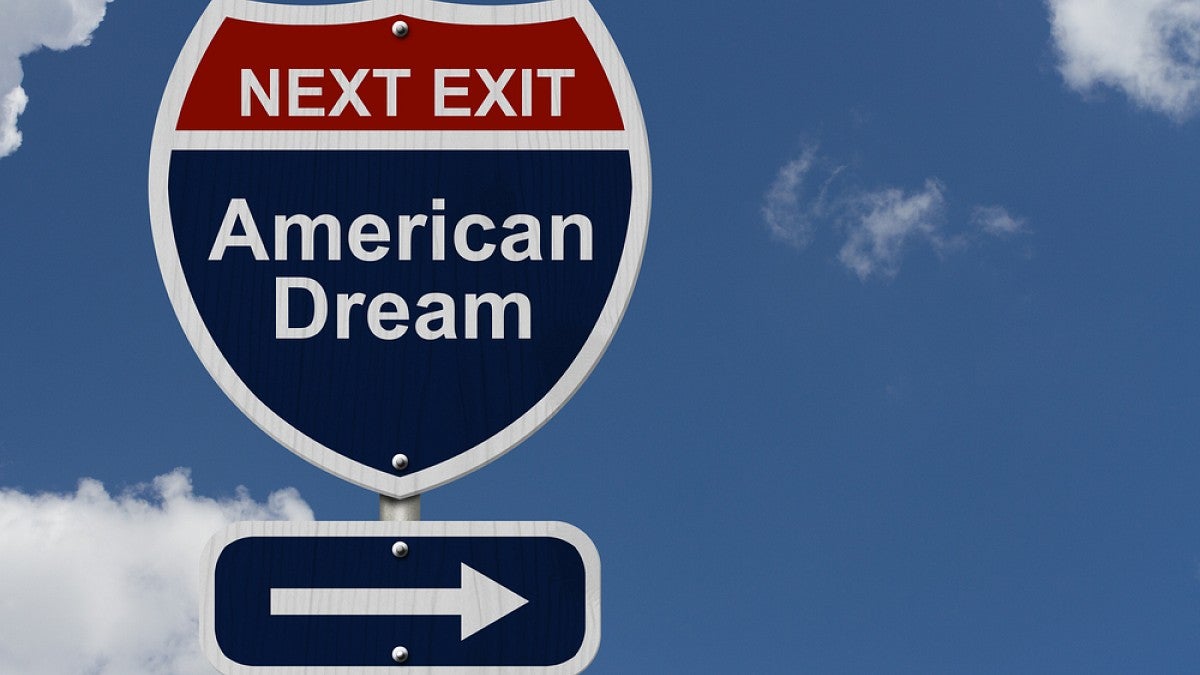It may be time for a reality check on a big part of the American dream.
According to UO psychology professor Azim Shariff, there is the idea — one that is touted by many politicians — that the ease to easily change our economic status by changing jobs is enough to make the nation's large levels of income inequality easier to swallow.
In reality, though, the United States has the second-lowest income mobility — the ability to make such job changes — among rich countries, according to recent economic studies noted prominently by Shariff and colleagues in a study published in the journal Perspectives on Psychological Science.
In the study, Shariff and co-authors Dylan Wiwad and Lara B. Aknin, both of Canada's Simon Fraser University, explored the tolerance for inequality in 19 countries, along with numerous economic and social factors. They found that a country’s fluid mobility of people between economic stations was a strong predictor of whether people tolerated the country’s level of inequality.
“Income mobility was actually a stronger predictor of tolerance for inequality than actual levels of inequality,” Wiwad said. “Essentially, people found it more tolerable to live in a relatively unequal place with high mobility, than in a relatively equal place where economic positions were fixed across generations.”
To examine the causal relationship, the researchers blended recent research in economics and social sciences by testing people's perceptions in a controlled psychological experiment.
They recruited an economically representative sample of 521 Americans — evenly split between the five pre-tax household income ranges used by the U.S. Department of Commerce. Participants read articles that portrayed American income mobility rates as being high or low, and then were given time to appraise what the articles meant for their own futures.
Those who had been led to believe that mobility was high, with people easily moving between different relative economic positions, were more likely to tolerate income inequality than were those in groups where mobility was portrayed as low. The level of frustration with inequality, however, rose when the mobility rates were seen as low.
"What we saw is that when people don't see much mobility their tolerance for income inequality drops, and their outrage starts to grow,” Shariff said. “They start to see the economic arrangement as fundamentally unfair."
Indeed, subsequent analyses revealed that the perception that people earned their economic position based on their own efforts was a key mechanism as to why a mobile society is seen as a tolerable one, even if unequal. The second mediating reason was whether people saw a future for their children.
"If there is no mobility, it's a sticky society where people who are born at the top will stay at the top. But if people see a mobile society — one in which their children have a chance of moving up — then they are willing to tolerate some discrepancies between rich and poor," Shariff said.
But people generally do a poor job estimating how much mobility actually exists, and despite low actual mobility in the U.S., Americans err on the side of being overly optimistic, he said. "In general, almost everyone thinks they are more likely to move up the ladder than they actually are. And no one thinks they’re actually going to experience downward mobility.”
Shariff noted that although these misperceptions may fill people with hope and optimism, the seductive narrative of the American dream may lull people into a sense of complacency about the country’s gross disparities between rich and poor.
Audio from Azim Shariff:
The Take-Home Message: In reality, income equality is needed for mobility
Using psychological research to probe economic perceptions
— By Jim Barlow, University Communications


